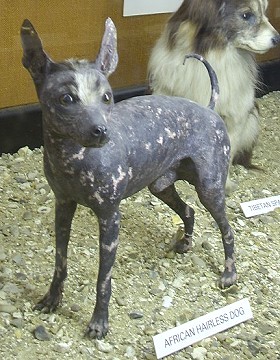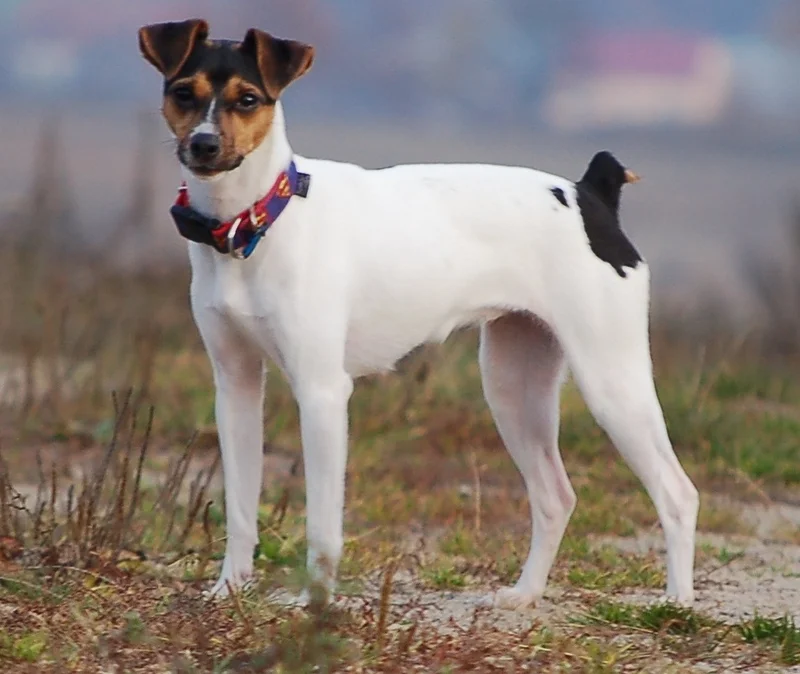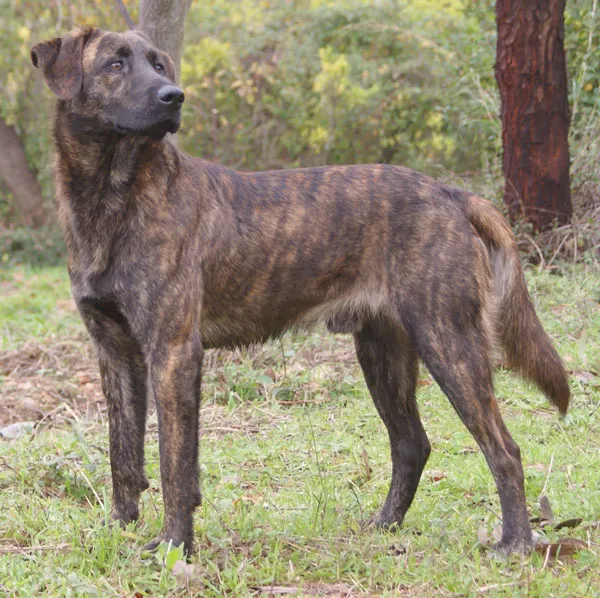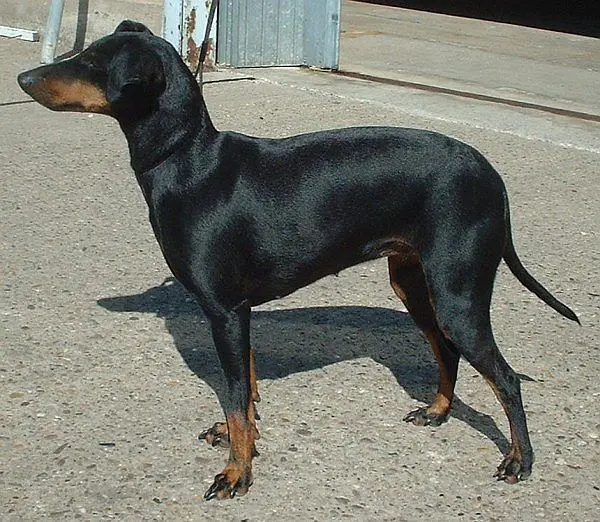Glen of Imaal Terrier
The Glen of Imaal Terrier is a small, spirited breed from Ireland, known for its playful nature and strong hunting instincts. With a sturdy build and a weather-resistant coat, they thrive in active households and are excellent companions.
Overview
🐕Breed Overview
✨Key Traits
💡What Makes Glen of Imaal Terrier Special
The Glen of Imaal Terrier is characterized by its sturdy build and playful spirit. They are known for their strong hunting instincts, which can lead to a high prey drive.
Their intelligence allows them to learn quickly, but they can also be stubborn, requiring consistent training. This breed enjoys being part of family activities and is known for its affectionate nature, often forming strong bonds with its owners.
Their unique history as silent hunters adds to their charm, making them a distinctive member of the terrier group. The Glen's ability to adapt to various living situations, combined with its playful and loyal personality, makes it a great choice for active families.
The Glen of Imaal Terrier is a small yet robust breed with a rich history rooted in the rugged terrain of Ireland. Known for their playful and affectionate nature, these terriers are not only charming companions but also skilled hunters. With a height ranging from 12 to 14 inches and a weight of 32 to 35 pounds, they possess a sturdy build that reflects their working heritage.
Their double coat, which can be wheaten, blue, or brindle, is weather-resistant and requires moderate grooming. The Glen's temperament is spirited and inquisitive, making them excellent family pets, especially for those with older children. While they can be wary of strangers and scrappy with other dogs, their loyalty and intelligence shine through in training and socialization.
With a life expectancy of 10 to 14 years, the Glen of Imaal Terrier is a breed that thrives on regular exercise and mental stimulation, making them ideal for active families. Their unique history as turnspit dogs and vermin hunters adds to their allure, ensuring that they remain a beloved breed among terrier enthusiasts.
🎉Fun Facts
Despite their small size, they have a deep, authoritative bark that can surprise many.
Glen of Imaal Terriers mature slower than many other breeds, often not considered adults until they are 3 or 4 years old.
The Glen of Imaal Terrier is known for its unique 'Glen sit,' where it sits upright on its hind legs.
They were historically used as turnspit dogs, running on wheels to cook meat.
Breed Characteristics
Family & Friends
Good Behavior
Get Up & Go
Household Harmony
Temperament & Personality
✨Key Traits
🐕Core Temperament
The Glen of Imaal Terrier is known for its spirited and tenacious temperament. They are playful and inquisitive, always ready for a game or a chase.
While they are generally good-natured and gentle with family members, they can be wary of strangers and may exhibit scrappy behavior with other dogs. Their loyalty and protective instincts make them excellent watchdogs, although they are not overly aggressive.
With proper training and socialization, they can thrive in family settings and adapt well to various lifestyles.
💫Personality Profile
The Glen of Imaal Terrier is a spirited and playful breed, known for its affectionate nature towards family members. They are intelligent and eager to engage in activities, making them excellent companions for active households.
While they can be wary of strangers, their loyalty to their families is unwavering. Their playful demeanor often shines through in interactions with children, where they exhibit patience and joy.
However, they may display scrappy behavior with other dogs, especially if provoked. Overall, the Glen is a loving and energetic breed that thrives on companionship and activity.
🔊Vocal Tendencies
The Glen of Imaal Terrier is generally a quiet breed, with a low tendency to bark. They may bark to alert their owners of intruders or unusual sounds, but they are not known for excessive vocalization.
Their deep, authoritative bark can be surprising given their small size. While they may not be as vocal as other terriers, they will communicate their needs and desires through barks or other sounds when necessary.
Overall, their noise level is manageable, making them suitable for various living environments.
Affection & Social Traits
Energy & Activity
Communication Style
Care Requirements
🏃♂️Exercise Requirements
Daily Exercise
The Glen of Imaal Terrier requires a moderate amount of exercise to maintain its physical and mental well-being. Ideally, they should engage in at least 30 to 60 minutes of exercise daily. This can include brisk walks, play sessions in a secure yard, or off-lead romps in a safe area.
Given their hunting background, they enjoy activities that stimulate their natural instincts, such as chasing after toys or participating in agility courses. Puppies may require shorter, more frequent play sessions to avoid overexertion, while older dogs may benefit from gentler activities to accommodate their energy levels. Regular exercise not only helps manage their weight but also reduces the likelihood of behavioral issues stemming from boredom or excess energy.
Insufficient exercise can lead to weight gain, destructive behavior, and increased anxiety. Overall, a consistent exercise routine is crucial for the Glen of Imaal Terrier's happiness and health.
Preferred Activities
🏠Living & Adaptability
Space Requirements
The Glen of Imaal Terrier is adaptable to various living environments, but they thrive best in homes with access to outdoor space. While they can live in apartments, it is essential to provide them with ample opportunities for exercise and mental stimulation.
A fenced yard is ideal for off-lead play, allowing them to explore and engage in natural behaviors. In smaller living spaces, owners should ensure daily walks and interactive play sessions to meet their exercise needs.
Due to their energetic nature, they may become bored or anxious in confined spaces, leading to destructive behaviors. Therefore, providing a stimulating environment is key to their well-being.
Climate Preference
🍲Feeding Guide
Schedule
Food Types
Portion Size
Special Nutritional Needs
The Glen of Imaal Terrier does not have specific dietary restrictions, but it is important to provide a balanced diet rich in protein and healthy fats to support their active lifestyle. Regular veterinary check-ups can help monitor their health and adjust dietary needs as they age.
✨Grooming Requirements
Grooming Overview
The Glen of Imaal Terrier has a double coat that requires regular grooming to keep it healthy and free of mats. The outer coat is harsh and weather-resistant, while the undercoat is soft.
Owners should brush their Glen at least once a week to prevent matting and remove loose hair. Additionally, stripping the coat two to four times a year helps maintain its texture and appearance.
Bathing should be done sparingly to preserve the natural oils in the coat. Regular nail trimming and ear cleaning are also essential to keep the dog comfortable and healthy.
Care Schedule
Brush weekly; strip coat 2-4 times a year; bathe as needed.
Health Profile
⚕️Health Care
Regular health care is crucial for the Glen of Imaal Terrier's lifespan. Routine veterinary check-ups, vaccinations, and preventive treatments can help detect and address health issues early.
Maintaining a balanced diet, providing regular exercise, and monitoring for any changes in behavior or health can contribute to a longer, healthier life. Owners should also be aware of breed-specific health concerns and work closely with their veterinarian to manage their dog's health throughout different life stages.
Health Issues Overview
⏳Average Lifespan
Genetic Factors
Genetics play a significant role in the lifespan of the Glen of Imaal Terrier. Responsible breeding practices that prioritize genetic diversity can help reduce the risk of hereditary health issues.
Potential owners should seek breeders who conduct health screenings for common conditions, such as PRA and hip dysplasia, to ensure they are selecting a healthy puppy. Understanding the genetic background of the breed can help owners make informed decisions about their dog's health and longevity.
Living Conditions
The Glen of Imaal Terrier's lifespan can be influenced by various environmental factors, including housing conditions, climate, and social interactions. Providing a safe and stimulating environment, along with regular exercise and mental challenges, can promote longevity.
Exposure to harsh weather conditions should be minimized, as they are more tolerant of cooler climates than hot ones. A secure yard for play and exploration is beneficial, as is regular interaction with family members to ensure their emotional well-being.
🏥Common Health Issues
Progressive Retinal Atrophy (PRA)
Warning Signs
🔬Diagnosis
Veterinarians typically diagnose PRA through eye examinations and genetic testing.
💊Treatment
Currently, there is no cure for PRA, but managing the dog's environment can help them adapt.
📝Management Tips
Regular eye check-ups and genetic testing for breeding dogs can help manage this condition. Responsible breeders should screen for PRA to reduce its prevalence.
Hip Dysplasia
Warning Signs
🔬Diagnosis
X-rays are used to diagnose hip dysplasia in dogs.
💊Treatment
Surgical options may be considered in severe cases.
📝Management Tips
Maintaining a healthy weight and providing joint supplements can help manage symptoms. Regular veterinary check-ups are essential.
Elbow Dysplasia
Warning Signs
🔬Diagnosis
X-rays and physical examinations are used to diagnose elbow dysplasia.
💊Treatment
Surgical intervention may be necessary in severe cases.
📝Management Tips
Weight management and joint supplements can help alleviate symptoms. Regular veterinary care is important.
🛡️Preventive Care
🔬Eye Examination
This test assesses the dog's eyes for hereditary conditions, particularly Progressive Retinal Atrophy, which can lead to blindness.
📅 Annually after 5 years of age.
🔬Hip Evaluation
This test evaluates the dog's hips for dysplasia, a common condition in many breeds that can lead to arthritis and mobility issues.
📅 At 12 months and again at 2 years of age.
🔬Elbow Evaluation
This test checks the dog's elbows for dysplasia, which can affect their mobility and overall health.
📅 At 12 months of age.
🔬DNA Test for PRA
This DNA test identifies carriers of the gene responsible for Progressive Retinal Atrophy, helping breeders make informed decisions.
📅 Before breeding.
Training
🧠Intelligence & Trainability
💪Work Drive
The Glen of Imaal Terrier has a strong work drive, stemming from its history as a hunting and farm dog. They thrive when given tasks to complete, whether it's participating in dog sports, engaging in scent work, or simply playing fetch.
Mental stimulation is crucial for their well-being, as they can become bored and restless without sufficient engagement. Activities that challenge their problem-solving abilities, such as agility courses or earthdog trials, are particularly beneficial for this breed.
⚠️Training Considerations
The Glen of Imaal Terrier can exhibit a stubborn streak, which may pose challenges during training. Their independent nature means they may not always comply with commands, especially if they find the task uninteresting.
To overcome these challenges, owners should employ consistent and firm training methods, using positive reinforcement to encourage desired behaviors. Socialization from a young age is crucial to help them interact well with other dogs and people.
Providing mental stimulation through puzzle toys and engaging activities can also help mitigate behavioral issues stemming from boredom.
📝Training Tips
Training a Glen of Imaal Terrier requires patience and consistency. Short, engaging training sessions are recommended to keep their attention. Positive reinforcement techniques, such as treats and praise, work well with this breed.
Early socialization is essential to help them become well-rounded dogs. Owners should focus on basic commands and gradually introduce more complex tasks. Incorporating play into training can make the process enjoyable for both the dog and the owner.
It's important to establish a routine and maintain a firm but gentle approach to ensure successful training outcomes.
History & Heritage
📜Origin Story
The Glen of Imaal Terrier originated in the rugged terrain of the Glen of Imaal in County Wicklow, Ireland. This breed came into existence during the late 16th century when Elizabeth I hired mercenaries to quell civil unrest in Ireland.
These soldiers brought their low-slung hounds, which interbred with local terriers, leading to the development of the Glen of Imaal Terrier. Initially bred for hunting vermin and serving as farm dogs, these terriers were known for their silent approach to hunting, distinguishing them from other barking terriers.
Their history as turnspit dogs, running on wheels to cook meat, adds to their unique background. Despite facing challenges in the 20th century, the breed's charm and tenacity have ensured its place in the hearts of dog lovers today.
⏳Development History
The Glen of Imaal Terrier's development can be traced back to the reign of Elizabeth I, when French mercenaries brought their low-slung hounds to Ireland. These dogs were bred with local terrier stock, resulting in a breed that was both strong and silent, capable of hunting vermin without alerting their prey.
Over the years, the Glen's role evolved from a working dog to a cherished family companion. Despite facing a decline in numbers, dedicated breeders in the 20th century worked to revive the breed, ensuring its survival into modern times.
The Glen's unique characteristics, such as its sturdy build and playful demeanor, have made it a distinctive member of the terrier group.
🛡️Purpose & Historical Role
Historically, the Glen of Imaal Terrier was bred for various roles, including hunting vermin such as rats, foxes, and badgers. They were also utilized as turnspit dogs, running on wheels to assist in cooking meat.
Their versatility made them valuable farm dogs, capable of guarding livestock and providing companionship to families. In modern times, they continue to serve as loyal companions and excel in activities like earthdog trials and agility, showcasing their intelligence and playful nature.
🏺Cultural Significance
The Glen of Imaal Terrier holds a unique place in Irish culture, representing the rugged spirit of the Irish countryside. Originating from the Glen of Imaal in County Wicklow, this breed was developed during a time of social upheaval in Ireland, where they served as versatile working dogs on farms.
Their history as vermin hunters and turnspit dogs reflects the breed's adaptability and resilience. The Glen's playful and affectionate nature has made it a beloved companion in many Irish households, and their rarity today adds to their charm.
The breed's recognition by the Irish Kennel Club in 1934 and later by the American Kennel Club in 2004 highlights its importance in the canine world, ensuring that the legacy of this hardy terrier continues to thrive.
Conservation Status
This breed is rare and not commonly found outside its region of origin.









